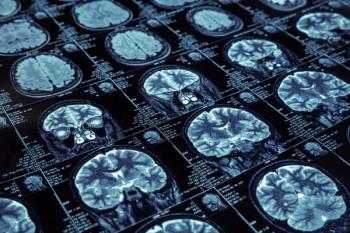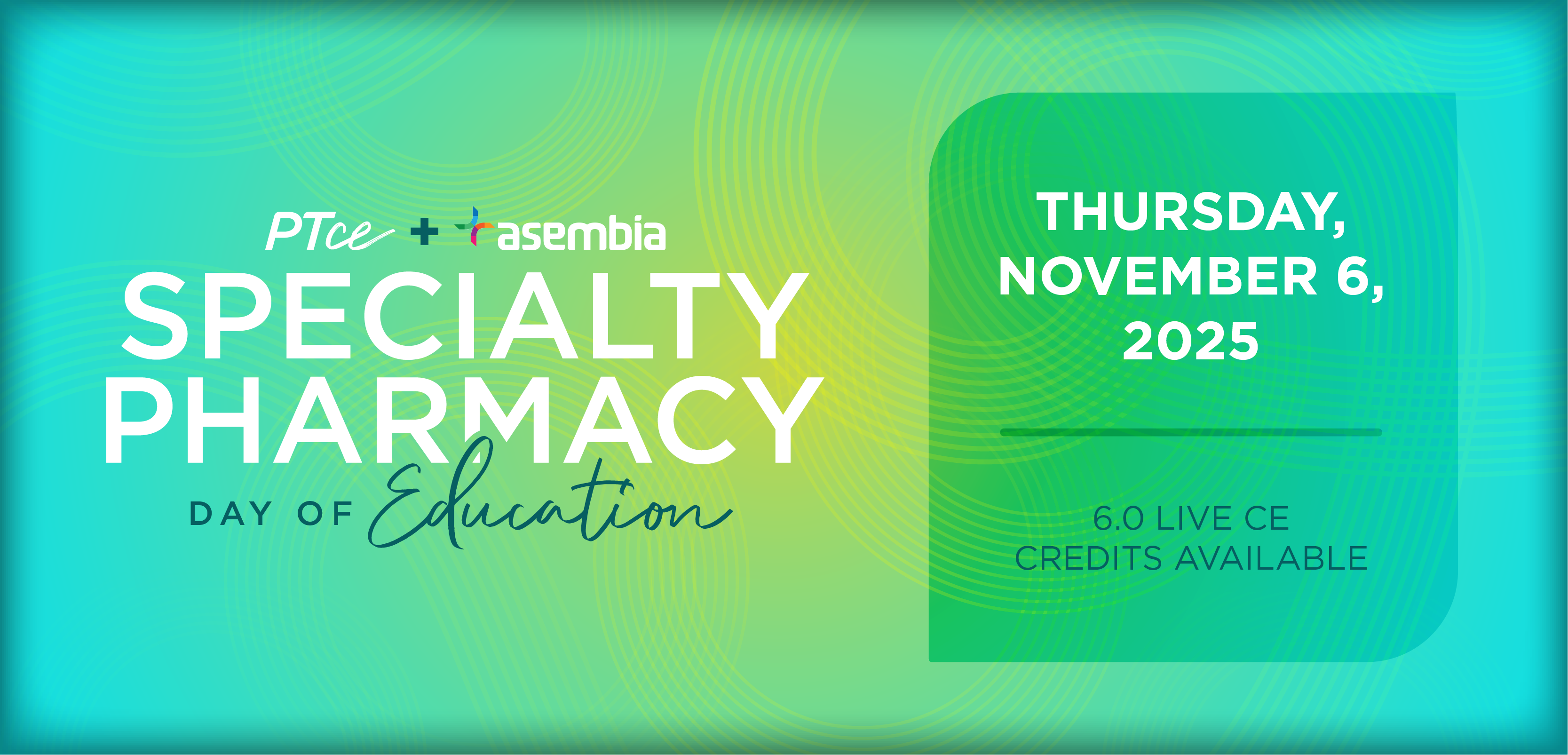
- Volume 0 0
Can MTM Programs Decrease Adverse Drug Events?
Just like Omnibus Budget ReconciliationAct '90 legislation beforeit, Medicare Part D legislationhas been hailed as a turning pointin the history of pharmacy. The legislationwas signed December 8, 2003;regulations were finalized January 21,2005, and implemented January 1, 2006.Medicare Part D created the advent offederally recognized Medication TherapyManagement (MTM) programs. Thelegislation dictates that MTM programsmust be developed in cooperation withlicensed and practicing pharmacistsand physicians. This is the first time inhistory that health care legislation hasdirectly acknowledged pharmacists asdirect health care providers.
Also stated in this legislation, MTMprograms must reduce the risk ofadverse events.1 The World HealthOrganization's definition of adversedrug event (ADE) is "any response to adrug that is noxious and unintendedand that occurs in doses in man forprophylaxis, diagnosis or therapy, excludingfailure to accomplish the intendedpurpose."2,3 Serious adversedrug reactions can be associated withdeath, hospitalization, prolonged hospitalization,permanent disability, orpermanent impairment.4
In its 2006 publication PreventingMedication Errors, the Institute ofMedicine reported that the outpatientMedicare population experiences anestimated 530,000 preventable ADEsannually, with an associated treatmentcost of approximately $887 million.5The actual number of ADEs may likelybe much higher, because less clinicallysevere ADEs often go unreported.6
ADEs are a major problem for theelderly population. Hanlon et al discoveredthat more than one third of ambulatoryolder adults taking 5 or moremedications have experienced an ADE.Of those patients, almost one thirdrequired a health care intervention,which might have included emergencydepartment visits and hospitalizations.7
Preventing Hospital Admissions
In their research report "HospitalAdmissions Resulting from PreventableAdverse Drug Reactions," McDonnell etal detailed their retrospective chartreview of an 11-month period at TempleUniversity Hospital.6 In examiningADEs serious enough to warrant hospitaladmission, they determined that62.3% (96 of 158) actually were preventable.What gaps existed in thesepatients' drug therapy that led to theADEs? The 4 main factors includedinadequate monitoring of therapy,inappropriate dose, patient nonadherence,and the presence of a drug interaction.The authors determined that98% of all ADEs involved more thanone of these factors.
Created in 2000 and updated in2003, the Beers criteria identified manymedications that have the potential tocause ADEs in the elderly population.8The Beers criteria include recommendationson appropriate elderly dosingand disease state-drug interactions, 2of the 4 main causes of ADEs found byMcDonnell et al.
Calkins et al discovered, in a study of99 patients, a statistically significantdifference between physicians' andpatients' perceptions of patients' understanding of the potential effectsof their medications.9 This lack of understandingalso can contribute greatlyto the potential development of ADEs.Fick et al stated in 2001 that preventionand recognition of ADEs in the elderlypopulation might be the principalchallenge in patient safety in thisdecade.10
Various studies have shown that performingsome or all of the componentsof an MTM service can reduce ADEs ina variety of settings.11-16 Pharmacistsproviding pharmaceutical care in MTMprograms are the ideal health care providersto meet this challenge.
Face-to-face Interventions
Touchette et al surveyed 70 healthplans that offer MTM programs covering12.1 million Medicare beneficiariesthroughout the United States.17 Theyfound that 95.2% of the programs employedor contracted pharmacists toprovide MTM services. The best MTMprograms offer face-to-face interventionswith a pharmacist trained or certifiedin geriatric care. Telephone callcenters and mailed interventions, however,were found to be the most commontypes of MTM programs offered.
The services offered in a good MTMsession encompass and address all ofthe preventable causes of ADEs. Face-to-face interventions with the actualmedications, not just a medication list,are important. ADEs can be linked topatients' use of medications, evenwhen the medications are prescribedcorrectly. It is very difficult to havepatients describe and demonstratecorrect inhaler technique over thephone or to identify which little whitetablet they take when they have a pain.
Complete Medical Histories
The American Pharmacists Associationhas issued definition and programcriteria for MTM services.18 Apatient's complete medical history istaken, including all medical conditions,surgeries, medications (Rx, OTC, andalternative), allergies, laboratory results,tests, and contributing behaviorsand habits. This collection allows thepharmacist to evaluate the patient as awhole and not by considering individualmedications. By comparing themedications to the disease states, thepharmacist is able to determine theirappropriateness. By assessing dose,route, and frequency, the pharmacist isable to determine whether adjustmentsneed to be made based onweight, disease state, or other factors.The collection of medication allergyhistory is necessary to avoid allergicreactions, whether severe or minor. Italso allows the pharmacist to betterrecommend changes in therapy byavoiding certain classes of drugs.
Assessing patients for drug interactionsis paramount to determinewhether the interaction may be causingpatient nonadherence, suboptimaltherapy, or potential toxicities. Minorinteractions may be a necessity in patientswith multiple disease states andpoor response to therapy. Providingpatient education and managementstrategies for these minor interactionsis an important part of an MTM serviceand increases patient adherence anddisease state control.
Overcoming Nonadherence
Determining when and how medicationswere added to therapy is importantas well. Trends can be seen as towhen toxicities presented, symptomsarose, or adherence changed. Knowingthe history of adherence in and of itselfcan determine whether therapy isappropriate or not. Initiating someonewho has a history of nonadherence ona medication that has a narrow therapeuticindex may produce toxicities orsuboptimal outcomes, which may leadto progression of the disease.
At the conclusion of an MTM session,both verbal and written communicationcan help patients understandand remember their medications' potential.Therefore, MTM sessionsshould decrease ADEs through patienteducation by increasing patient awarenessof the correct way to take theirmedications and why.
Pharmacists have been providingMTM for many years, under differentnames and in varied environments.Medicare Part D, however, may providepharmacists with an avenue to demonstratetheir knowledge and competenceto both patients and other healthcare providers, while decreasing patientharm and the economic impact ofADEs.
Dr. Knudsen is an assistant professorof pharmacy practice at MidwesternUniversity College of Pharmacy?Glendale, Glendale, Ariz. Mr.Burtenshaw and Mr. Foggattare both PharmD candidates atMidwestern University Collegeof Pharmacy?Glendale.
References
1. Department of Health and Human Services. MA/PDP Operational User GroupCall March 15, 2006. Medication Therapy Management (MTM) SubmissionsContract Year 2007. Available at:http://www.asapnet.org/memberarchive/MTMP_Submission_Announcemen.pdf. Accessed January 5, 2007.
2. Karch FE, Lasagna L. Adverse drug reactions: a critical review. JAMA.1975;234:1236-1241.
3. Naranjo CA, Shear NH, Lanctot KL. Advances in the diagnosis of adverse drugreactions. J Clin Pharmacol. 1992;32:897-904.
4. Schmader KE, Hanlon JT, Pieper CF, et al. Effects of geriatric evaluation andmanagement on adverse drug reactions and suboptimal prescribing in the frailelderly. Am J Med. 2004;116:394-401.
5. Aspden P, Wolcott J, Bootman JL, Cronenwett LR, eds. Institute of Medicine.Preventing Medication Errors. Washington, DC: National Academies Press;2006.
6. McDonnell PJ, Jacobs MR. Hospital admissions resulting from preventableadverse drug reactions. Ann Pharmacother. 2002;36:1331-1336.
7. Hanlon JT, Schmader KE, Koronkowski MJ, et al. Adverse drug events in highrisk older outpatients. Am J Geriatr Soc. 1997;45:945-948.
8. Fick DM, Cooper JW, Wade WE, Waller JL, Maclean JR, Beers MH. Updatingthe Beers criteria for potentially inappropriate medication use in older adults:results of a US consensus panel of experts. Arch Intern Med. 2003;163:2716-2724.
9. Calkins DR, Davis RB, Reiley P, et al. Patient-physician communication athospital discharge and patients' understanding of the postdischarge treatmentplan. Arch Intern Med. 1997;157:1026-1030.
10. Fick DM, Waller JL, Maclean JR, et al. Potentially inappropriate medication usein a Medicare managed care population: association with higher costs andutilization. J Managed Care Pharm. 2001;7:407-413.
11. Bond CA, Raehl CL, Franke T. Clinical pharmacy services, hospital pharmacystaffing, and medication errors in United States hospitals. Pharmacotherapy.2002;22(2):134-147.
12. Kucukarslan SN, Peters M, Mlynarek M, Nafziger DA. Pharmacists on roundingteams reduce preventable adverse drug events in hospital general medicine units.Arch Intern Med. 2003;163:2014-2018.
13. LaPointe NM, Jollis JG. Medication errors in hospitalized cardiovascular patients.Arch Intern Med. 2003;163:1461-1466.
14. Schnipper JL, Kirwin JL, Cotugno MC, et al. Role of pharmacist counseling inpreventing adverse drug events after hospitalization. Arch Intern Med.2006;166:565-571.
15. Schumock GT, Butler MG, Meek PD, et al. Evidence of the economic benefit ofclinical pharmacy services: 1996-2000. Pharmacotherapy. 2003;23(1):113-132.
16. Zermansky AG, Petty DR, Rayner DK, Freemantle N, Vail A, Lowe CJ.Randomised controlled trial of clinical medication review by a pharmacist ofelderly patients receiving repeat prescriptions in general practice. BMJ.2001;323:1340-1343.
17. Touchette DR, Burns AL, Bough MA, Blackburn JC. Survey of medication therapymanagement programs under Medicare Part D. J Am Pharm Assoc (Wash DC). 2006;46:683-691.
18. American Pharmacists Association. Medication Therapy Management Services.Definition and Program. Available at:www.aphanet.org/AM/Template.cfm?Section=Home&CONTENTID=4577&TEMPLATE=/CM/ContentDisplay.cfm. Accessed January 5, 2007.
Articles in this issue
over 18 years ago
HIVover 18 years ago
compounding HOTLINEover 18 years ago
Miller Rises Above with Ambitious Attitudeover 18 years ago
Project AWAREover 18 years ago
Pharmacies' Lawsuit Against PBMs Won on Appealover 18 years ago
E-Rx Innovation Hits Nation's Capital...over 18 years ago
...And E-Rx Is Available to Every Physicianover 18 years ago
Enhanced Messaging Targets Specific Groupsover 18 years ago
Resource Helps Patients Navigate Health Care Environmentover 18 years ago
PDAs Help Pharmacists Deliver The Best Care, AnywhereNewsletter
Stay informed on drug updates, treatment guidelines, and pharmacy practice trends—subscribe to Pharmacy Times for weekly clinical insights.

















































































































































































































